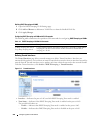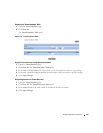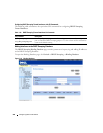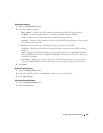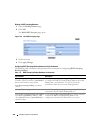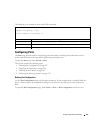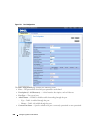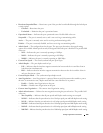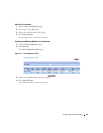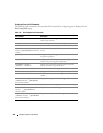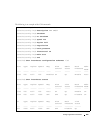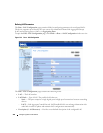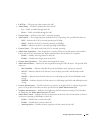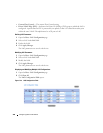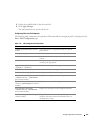
300 Configuring Switch Information
•
Current Advertisement
— The port advertises its speed to its neighbor port to start the negotiation
process. The possible field values are those specified in the
Admin Advertisement
field.
•
Neighbor Advertisement
— Indicates the neighboring port’s advertisement settings. The field values
are identical to the
Admin Advertisement
field values.
•
Back Pressure
— Back Pressure mode is used with Half Duplex mode to disable ports from receiving
messages. Back Pressure is not supported in OOB ports.
–
Enable
— Enables Back Pressure mode on the port.
–
Disable
— Disables Back Pressure mode on the port.
•
Current Back Pressure
— The current Back Pressure setting.
•
Flow Control
— Indicates the flow control status on the port.
–
Enable
— Enables flow control on the port.
–
Disable
— Disables flow control on the port.
–
Auto-negotiation
— Enables the auto negotiation of flow control on the port.
•
Current Flow Control
— The current Flow Control setting.
•
MDI/MDIX
— Allows the device to decipher between crossed and uncrossed cables. Hubs and
switches are deliberately wired opposite the way end stations are wired, so that when a hub or switch is
connected to an end station, a straight through Ethernet cable can be used, and the pairs are match up
properly. When two hubs/switches are connected to each other, or two end stations are connected to
each other, a crossover cable is used ensure that the correct pairs are connected. Auto MDIX does not
operate on FE ports if auto negotiation is disabled. The possible field values are:
–
Auto
— Use to automatically detect the cable type.
–
MDIX
— Use for hubs and switches.
–
MDI
— Use for end stations.
•
Current MDI/MDIX
— Indicates the current device MDIX settings. The possible field values are:
–
MDI
— The current MDI setting is MDI.
–
MDIX
— The current MDI setting is MDIX.
•
Private VLAN Edge (PVE)
— Indicates the Private VLAN Edge (PVE) group to which the LAG is
configured. A port defined as PVE is protected by an uplink, so that it is isolated from other ports
within the same VLAN. The uplink must be a GE port.
•
LAG
— Specifies if the port is part of a LAG.
If port configuration is modified while the port is a LAG member, the configuration change is only
effective after the port is removed from the LAG.



